Complete Scrapers
 FREE SHIPPING ON ORDERS OVER $49
FREE SHIPPING ON ORDERS OVER $49
*Ground shipments to the continental US. Outside regions do not apply.

Harnessing the Power of Complete Scrapers for Flawless Windows
Imagine looking through your windows and seeing nothing but unobstructed views, free from any specks or stains. Achieving this level of clarity is entirely possible with the right tools at your disposal. Enter the world of complete scrapers – the unsung heroes and sometimes an absolute necessity in the quest for pristine windows. Whether you need to remove bird droppings, paint, caulking, concrete, or hard water, this guide will navigate you through the safe and effective use of scrapers, as well as the best products available, ensuring your glass surfaces remain impeccable.
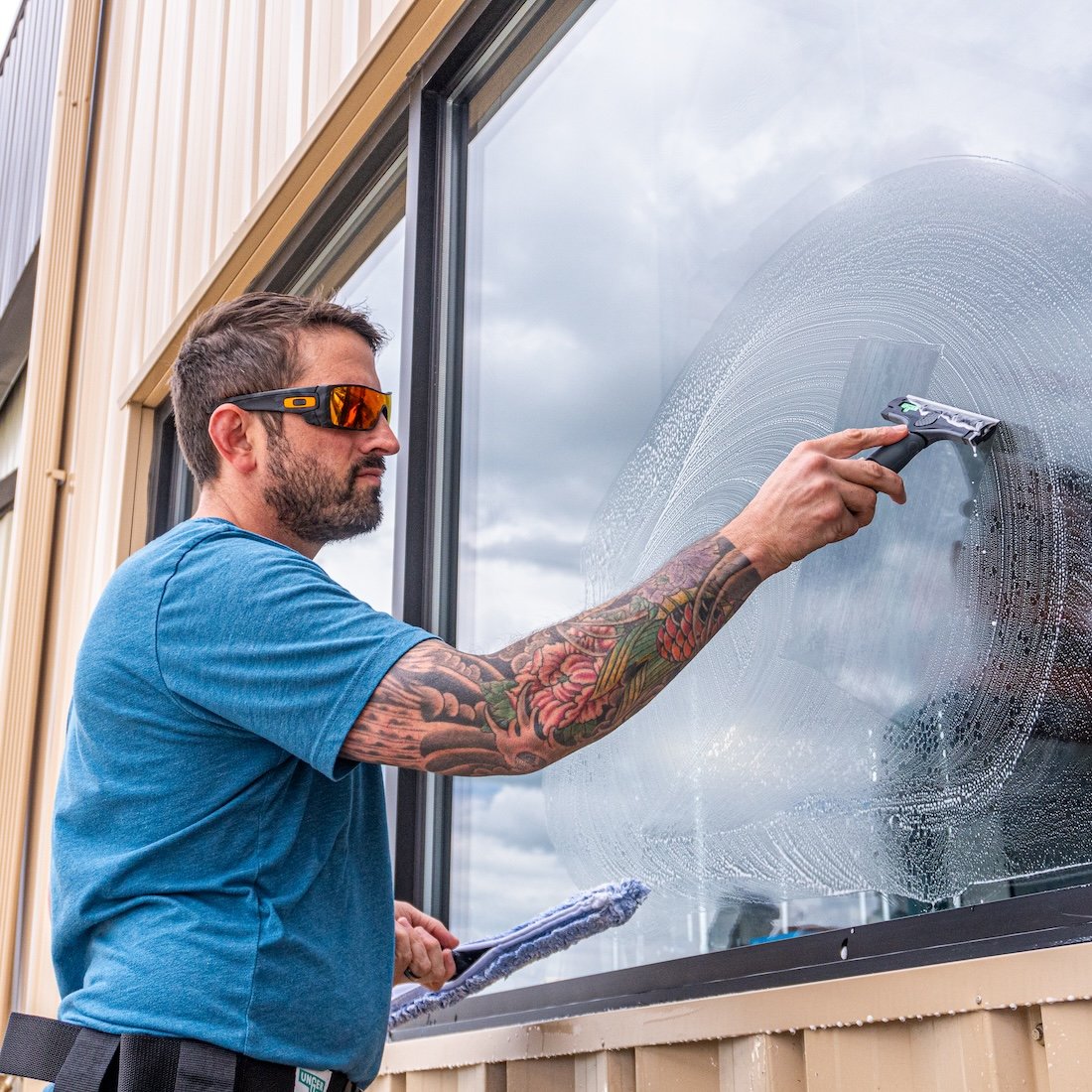
How to Safely Use Scrapers on Glass Surfaces?
Using complete window scrapers on glass can require a careful approach to prevent scratches and achieve the intended results. Begin by ensuring your complete window scraper has a fresh blade free of nicks or any grime from previous use. You’re going to want to do a quick pre-clean with your scrubber and squeegee to remove any large, loose debris that could be dragged across the glass with your scraper and potentially cause damage. Next you’ll want to generously apply your basic window cleaning solution to the glass again once the pre-clean is completed. The slippery lubricating effects from your preferred window cleaning solution will allow your complete window scraper to smoothly glide across the surface without chattering or digging in. This wetting process before sliding the blade is very important as it helps the razor be more gentle on the surface of the delicate glass so scratches aren’t made. When using the scraper, maintain a consistent angle between 30 to 45 degrees to the glass surface, applying gentle pressure as you slide it across to remove any unwanted material. Try to only scrape in one direction at a time and avoid aggressive back and forth scraping. Keep your scraping motions rhythmic and controlled because you’re dealing with a very sharp object and you don’t need any cuts on the job slowing you down. It’s possible several rounds of scraping might be needed to remove all of the unwanted debris so just remember to continuously check the condition of your blade and ensure the glass you’re working on has been wetted with a lubricant before any blades are applied to it. It’s a technique that demands a steady hand and a bit of patience for the best outcomes but is crucial to master as a professional window cleaner.

How Do Complete Scrapers Compare to Steel Wool?
Complete window scrapers and steel wool work differently but accomplish similar tasks and are both essential to have in your back pocket as a professional. Scrapers, with their precise blades, are excellent for removing materials like paint or bird droppings directly from the glass without spreading it around. Its powerful peeling abilities will allow you to remove even the most clingy challenges, such as unwanted stickers, with ease. Steel wool, on the other hand, is usually better suited for treating smaller areas or surfaces where slight abrasiveness is not a concern. If you were thick, stubborn fingerprints, steel wool would be your worst nightmare. You’ll likely find yourself using your complete scraper and steel wool back to back to get through really stubborn grime. Keep both of these tools readily available in your tool belt as they are powerful resources that should both be considered; not just one or the other.
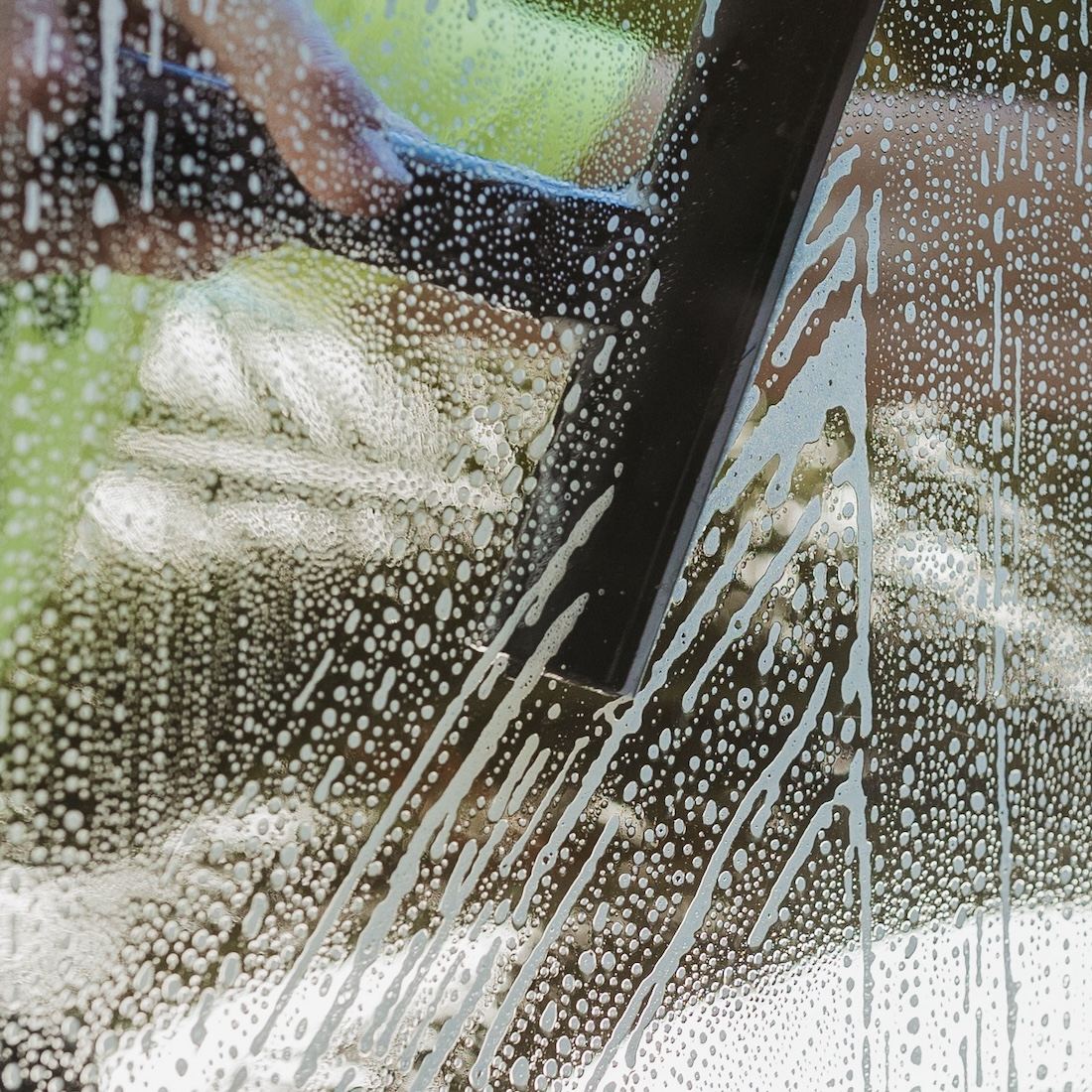
Can Complete Scrapers Be Used on Tinted or Coated Windows?
Tinted or coated windows require special consideration due to their delicate nature. You can identify the types of windows you're dealing with by identifying the model information that is usually discreetly etched into one of the corners of the glass. Some windows with a coating such as Low E, designed to help with energy efficiency, might be easily identified while others can be more difficult to tell with a quick glance. Consider asking the customer what kind of windows they have if you’re having trouble identifying the specifications. As a professional, you’ll want to minimize risk to save you and your customer from any potential headaches. Keep in mind, these fragile coatings can be applied between the panes so they are safe from being disturbed, but sometimes they are applied to the exterior surfaces so precautions must be taken. This is why it’s very important to understand the type of window you’re dealing with and recommended care instructions from the manufacturer before getting started with a razor. While complete scrapers with traditional metal razors are generally considered not safe on these surfaces, the use of an alternative plastic razor blade from WCR might be appropriate for such delicate windows. The softness of the plastic will be much more gentle and forgiving, leading to less risk of damage. Any metal bladed scraper should never be used on the side of a window where tint film has been applied as it will very easily cut through the thin layer of film. Always perform a small test on an inconspicuous area to ensure no damage occurs. Proper precautions and the right tools will allow you to clean these windows effectively without compromising their integrity.
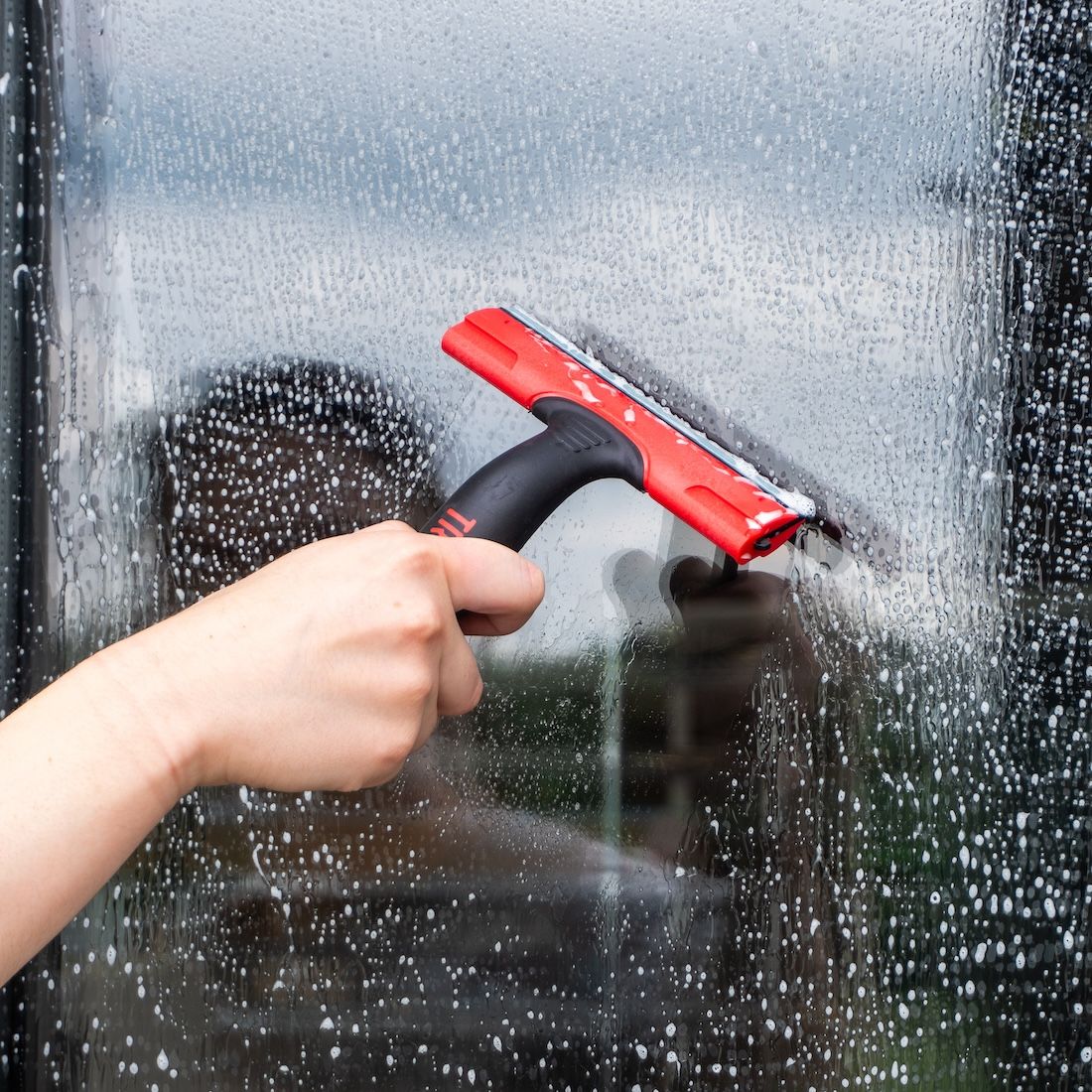
What Safety Precautions Should Be Taken When Using Complete Scrapers?
When it comes to using complete scrapers, safety is paramount. Maybe consider wearing protective gloves to shield your hands if your handle is slippery when wet or even if you’re just a little clumsy. It can also be a good idea to wear eye protection to guard against any particles that might become airborne during scraping. Most importantly, be sure to holster or apply your blade cover when you’re not using your window cleaning scraper. One hasty reach into your tool pouch without a razor cover could be the end of your cleaning day. With that being said, getting a window cleaning scraper holster to attach to your tool belt can greatly increase safety by having a consistent place to place your scraper where the blade is fully covered. Also take your time and be patient when replacing your complete window cleaning scraper blade. These razors are obviously very sharp to get the job done so one small slip can do some damage when handled without care.
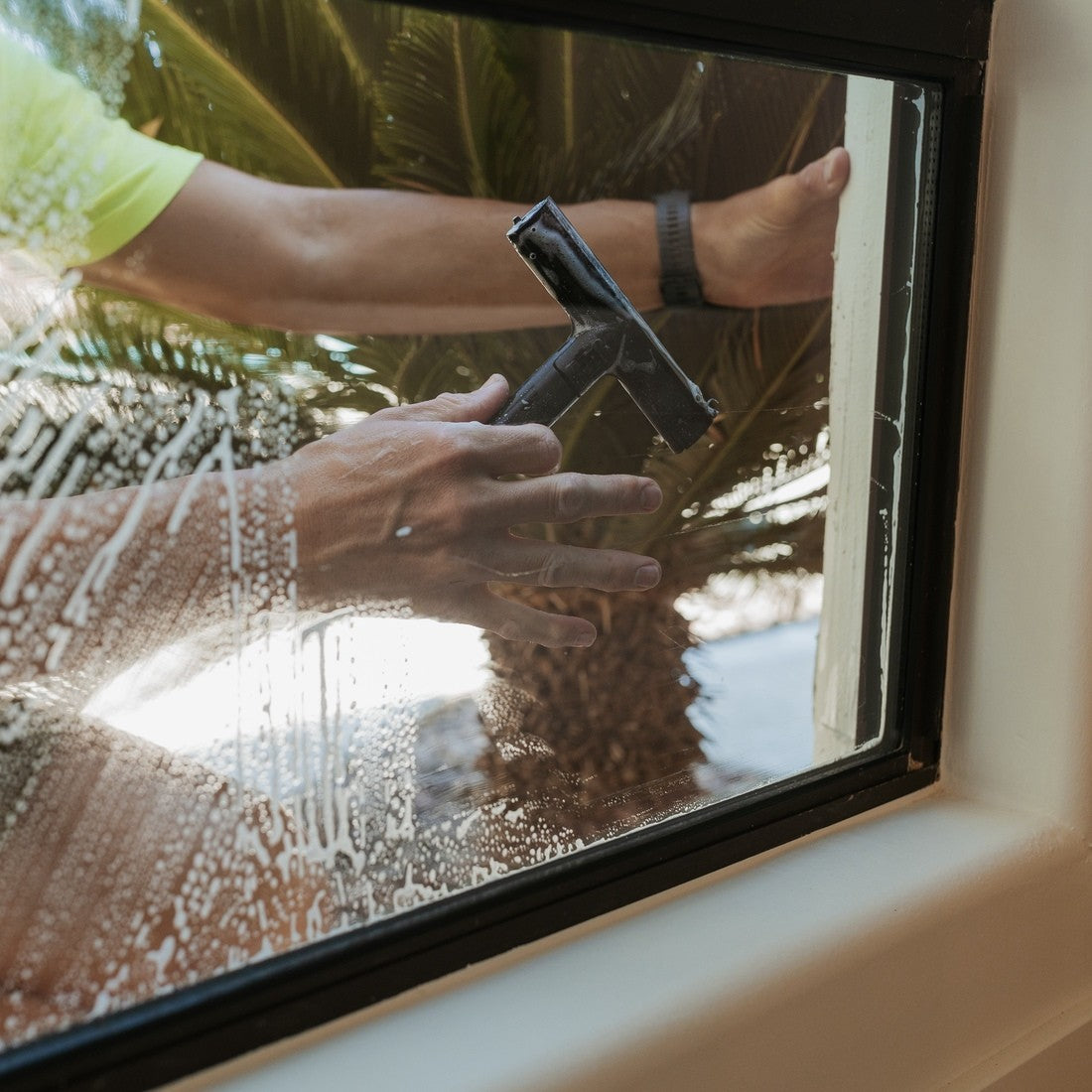
What Are the Common Mistakes to Avoid When Using Complete Scrapers?
To avoid common pitfalls when using complete scrapers, never work with a dull blade, as it's more likely to cause damage to the glass. Take a very close look at your blade for damage or debris; it can be very hard to spot! Forgetting to clean the window beforehand can result in dragging debris across the glass, leading to scratches. Additionally, applying excessive pressure or skipping lubrication can increase the risk of damage. Keep a close eye on the angle in which the razor is slid across the glass; about 45 degrees from the surface of the glass will be your best bet for optimal results and safe use. Lastly, try to avoid back and forth scraping without lifting the blade from the glass. Slide the blade over the glass in one direction, smooth and controlled before lifting and returning to your starting point for another pass across the glass. Avoiding these mistakes will enhance both the safety and effectiveness of your window cleaning efforts.
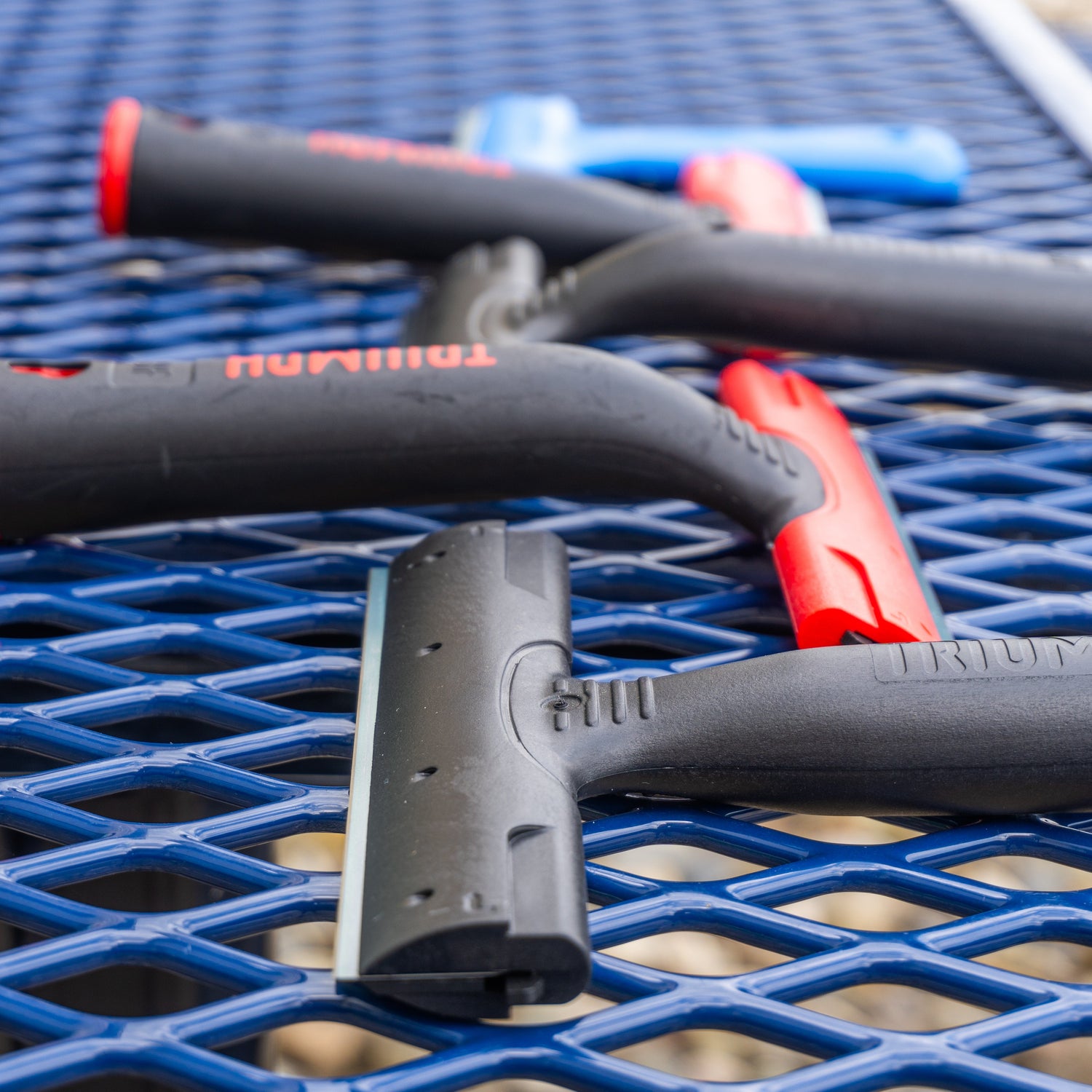
Types of Scrapers?
Complete window cleaning scrapers come in a variety of styles to suit different cleaning tasks. Options include fixed, retractable, swiveling, angled, straight, and adjustable. A fixed scraper, such as the World Enterprises 6 Inch will have a blade that does not move while a retractable scraper, such as the Unger ErgoTec Safety Scraper will have a blade that slides away into a safe position or extends and locks out during use. Retractable blades can offer a very safe and convenient experience for the user but some window cleaners might prefer the simplicity and lack of moving parts with a fixed blade. You then have different options for blade angle, some are fixed straight, some fixed at a particular angle and some adjustable to multiple angles for ultimate versatility. Lastly, you can even find complete window cleaning scrapers with swiveling abilities like the Sörbo Horizontal Swivel Scraper. These special tools pivot at the handles, increasing your ease of access to difficult areas especially when using your scrapers on a pole to work at heights or get to those hard to reach areas. For tinted or coated windows, look for scrapers equipped with plastic blades that minimize the risk of damage. Each type offers its own unique benefits, allowing you to select the scraper that best meets your window cleaning needs. As usual it's recommended to try and have several options to choose from when on the job so you're most comfortable and can provide the best service.
Understanding how to effectively use complete window cleaning scrapers is key to maintaining the beauty and clarity of your client’s windows. By selecting the appropriate scraper, employing the correct technique, and adhering to safety precautions, you can tackle any window cleaning challenge with confidence. Remember, the goal is not just cleanliness but also preserving the condition of windows for the long term. With these insights, your journey to flawless windows is well within reac.





